Fir planting rules and scheme
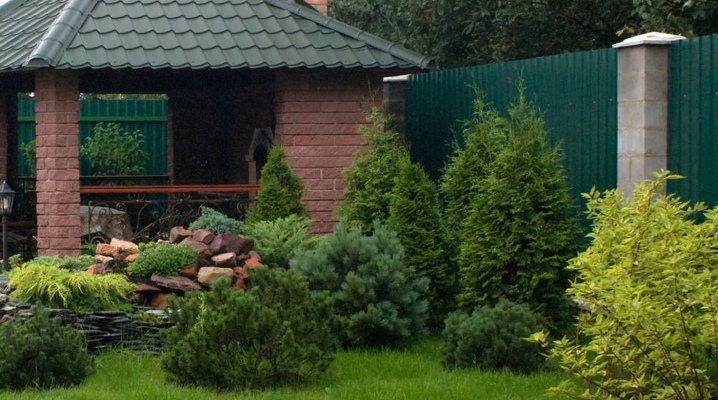
Fir, planted in a summer cottage, is somewhat finicky in care, but its cultivation is quite feasible. Aesthetic appearance, healing properties, magical aroma - all this makes the fir quite frequent inhabitant of private gardens, and some difficulties in planting and leaving do not frighten Russian summer residents.
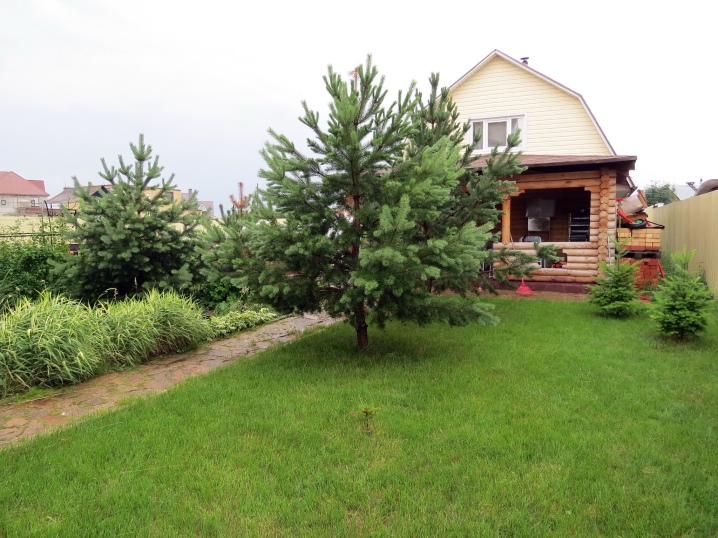
Landing dates
The optimal time for planting fir is April. Planting is allowed in late August or early September, while the planting scheme in this case does not differ in any way from the spring one. However, a tree planted later does not always have time to adapt to new conditions before the onset of winter and may freeze.
Landing time is also determined by the climate of the region. For example, in the middle lane, gardeners prefer to plant a tree at the end of September or at the beginning of October, and in the southern regions it is possible to plant an ephedra even in winter, provided the temperature is above zero. In northern latitudes, as in most other areas, the most preferred planting time is spring.
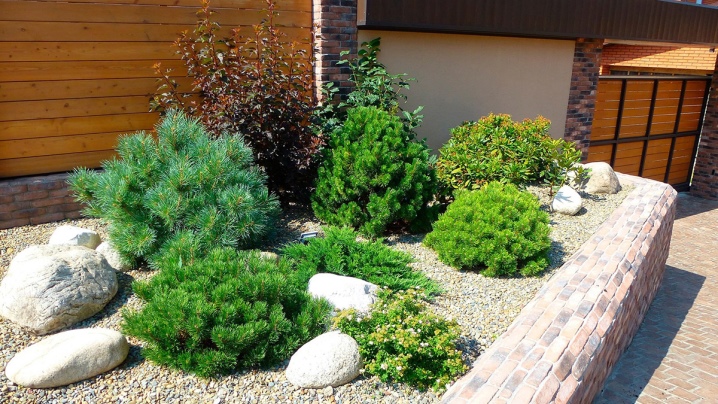
Choosing a place
You can plant a crop near a body of water, but it is important to avoid planting in permanently wetlands. The plant has powerful roots that grow to a great depth, and therefore it should not be allowed to land on a site with a close occurrence of groundwater, otherwise it will provoke rotting of the root system and the death of the plant.
In its natural environment, fir grows in shady forests, therefore it is recommended to create shade or partial shade on the site. When single planting, keep in mind that the needles are very vulnerable to sunlight and can cause burns. Therefore, a young specimen will feel more comfortable if there is a little shading above it. True, the tree has an interesting property to recover after damage to shoots by the sun and drought, but for this, favorable conditions should be created.
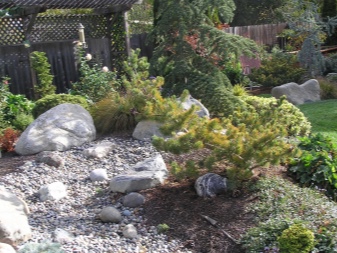

For full development, the seedling needs a loose, nutritious, slightly acidic soil. In order for the composition of the land to meet the requirements for growing fir, a place should be prepared in advance.
So, in the case of planting on clay soil or near groundwater, it is necessary to organize good drainage. If the soil is too sandy, then it is required to process the planting hole with clay.
Besides, when choosing a place, it should be borne in mind that a young bush needs protection from drafts and wind, and he also does not like gas pollution and smoke, so landing in urban areas near industrial facilities may not bring a good result.
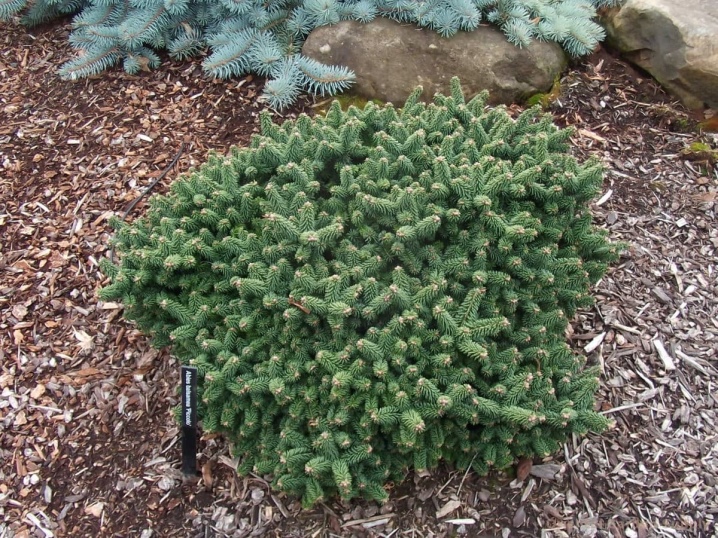
How to plant correctly?
A young seedling has more prospects if it is planted at a temperature of + 5 ... 12 degrees Celsius. It is also important to take a responsible approach to the choice of planting material.
Get a young shoot in proven nurseries. Give preference to samples in containers, they should not be less than 4 years old. The bush should be easily removed from the container along with the earthen lump. If a tree has a bare root system, then it is better to refuse to buy it - it will not be able to adapt to a new place. This happens if the seller dug a seedling in the forest or did not care for the shoot.
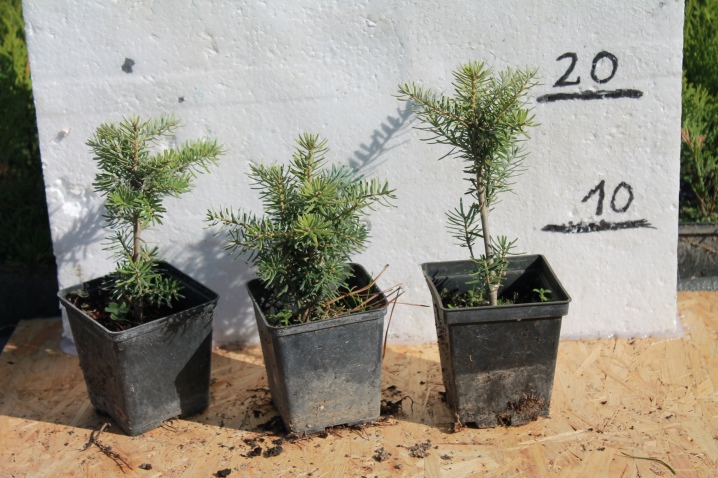
Landing in the courtyard of the house is carried out in cloudy weather. The pit is dug in advance - 2-4 weeks before planting. It is covered with a nutrient mixture and thoroughly moisturized.
The soil should always be slightly moist, but at the same time it is good to let water through. The planting process involves several steps.
- Dig a hole to a depth of 60-70 cm. The standard diameter is from 60 cm, but usually this parameter is determined by the dimensions of the root system together with the earthen lump. The width of the hole should be 20 cm larger than the rhizome on each side.
- Loosen the bottom. If necessary, lubricate with clay or equip the drainage system.
- Prepare a nutrient mixture. It can be done by combining loam, humus, peat, river sand in a ratio of 2: 3: 1: 1. To improve the structure, you can add sawdust and nitrophosphate. With this composition, additional feeding in the first 2-3 years will not be needed.
- Remove the seedling from the container and place it in the hole so that the root collar remains flush with the ground - with strong deepening, the formation of putrefactive processes is not excluded. And also, be careful with the roots, you cannot bend them.
- Fill the empty space with fertile soil, and lightly compact the soil around the shoot.
- Organize a small tree-trunk circle, water the tree with sprinkling with settled warm water.
- Lay out a layer of mulch such as sawdust, spruce branches, straw, fallen needles. This process will keep moisture in the ground for a long time, protect the surface from the formation of a hard crust, and prevent the development of weeds.
- Put a support near the seedling, and tie up a young tree, otherwise it may turn out to be turned out under the influence of a strong gust of wind.
- When planting in groups between two tall specimens, it is important to maintain a distance of 3-3.5 m; for framing alleys - 4-5 m; when creating a hedge, a distance of up to 2.5 m is sufficient.
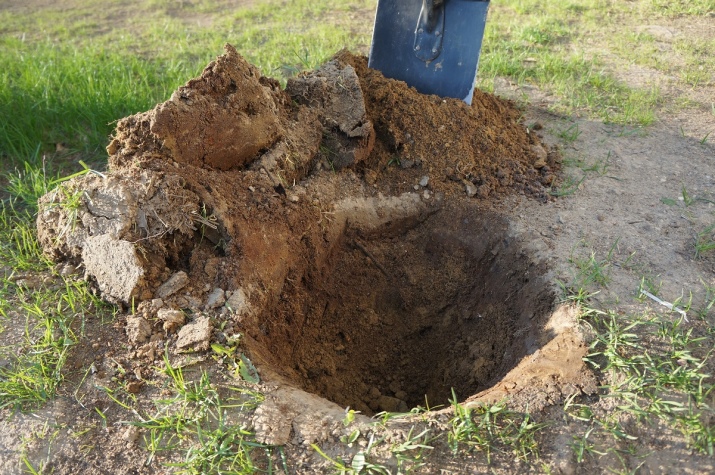
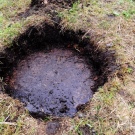
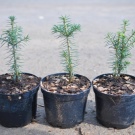
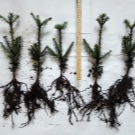

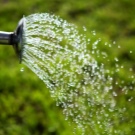
Some summer residents are not afraid to germinate this crop from seeds. This is a long and laborious process, but for the sake of experiment, everyone can try their luck. Difficulties begin already at the stage of collecting seeds. Unripe cones with closed scales are collected from the tree and left warm. The grains are removed from them as soon as the ripening and opening process takes place.
Next, the seeds are hardened by leaving them in the refrigerator or burying them in a container in the snow for 4 months. The prepared planting material is planted in April in pots to a depth of 1-2 cm. The substrate recommended for this includes sand, peat and turf. After sowing, the container is covered with foil, creating greenhouse conditions.

Periodically, the earth needs moistening, loosening and ventilation. The first shoots should hatch within a month. After a year, the seedlings are planted and grown up to 4 years of age. Only at this age are the shoots ready for transplanting into open ground.
At the same time, do not be alarmed that the shoots in the container will grow very slowly - in 4 years they will rise only 30-40 cm. In the open field, growth will significantly accelerate.
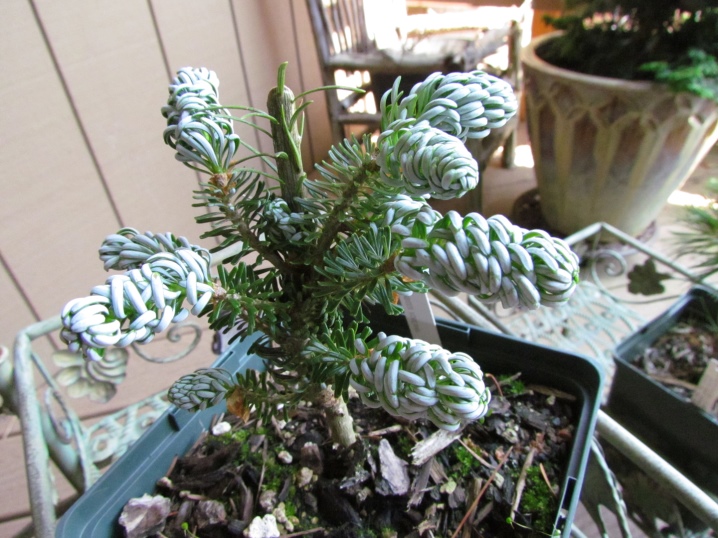
Follow-up care
It is not so difficult to take care of the presented culture in the country, but it is important to follow some rules. The care includes several activities.
Watering
This criterion is determined by varietal characteristics. There are moisture-loving species that require moisture several times over the summer in case of drought. Most varieties do not need this procedure, and even, on the contrary, watering can adversely affect the health and appearance of the tree. The culture receives the required amount of moisture from precipitation.
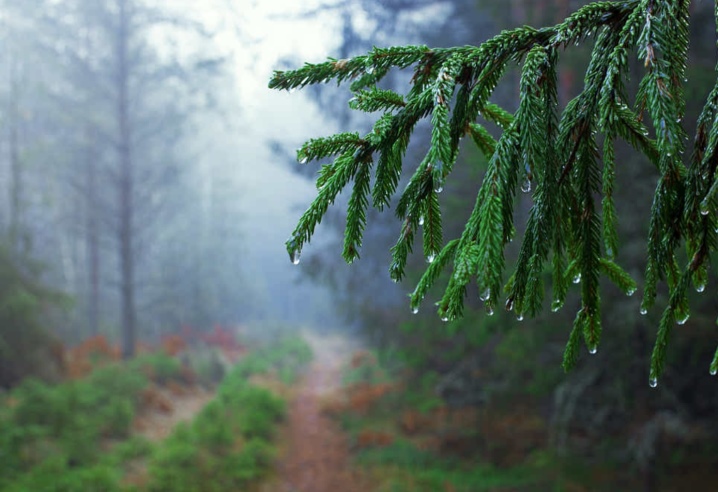
Top dressing
As already mentioned, a tree planted using a nutrient mixture does not need to be fertilized for the next 2-3 years. An older specimen should be fed once a year. Additional food is introduced in the spring.
As a top dressing, for example, 0.1-0.15 g of complex fertilizer "Kemira-Universal" is suitable. During fertilization, it is also required to loosen the soil.
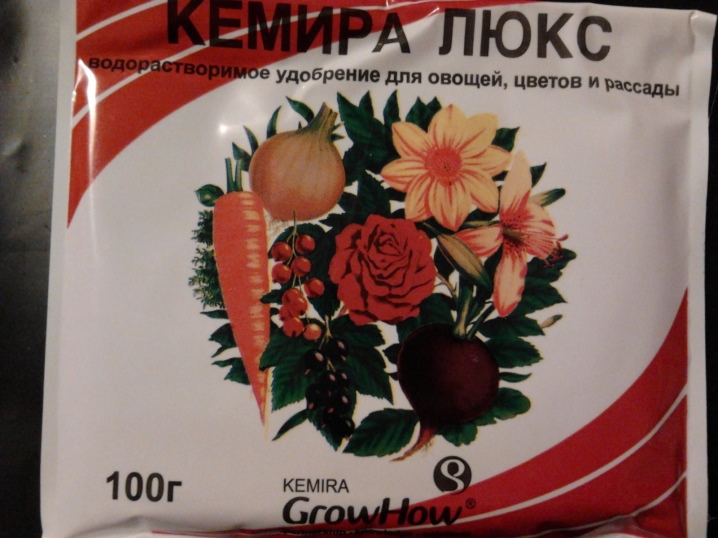
Loosening and mulching
To reduce the risk of insect and pest damage to the tree, you should keep the trunk circle clean. After each rain or watering (in the case of growing moisture-loving species), you need to loosen the soil well and eliminate weeds. It is customary to mulch with a layer of 8-10 cm so as not to hide the root collar - that is, about 0.5 m around the trunk. Peat, compost, shredded bark can serve as mulch.
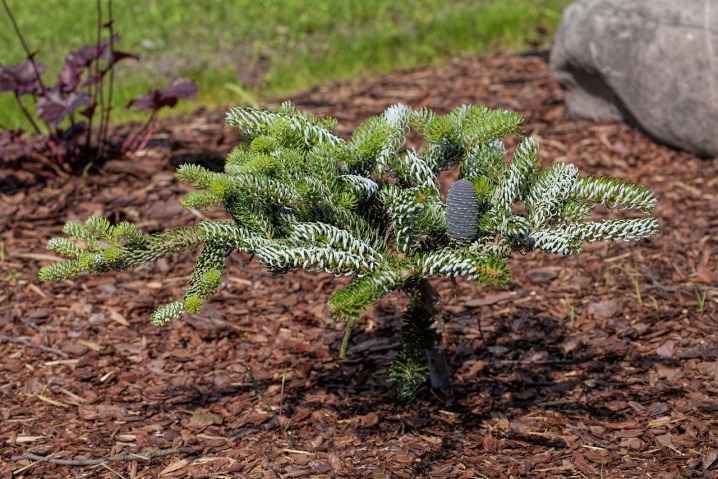
Pruning
Most varieties have a neat aesthetic crown without human intervention, but there are decorative species that require haircuts. The procedure is carried out in early spring, before the beginning of the growing season. At this time, sanitary pruning is also important, during which damaged, wilted or frozen branches should be removed.
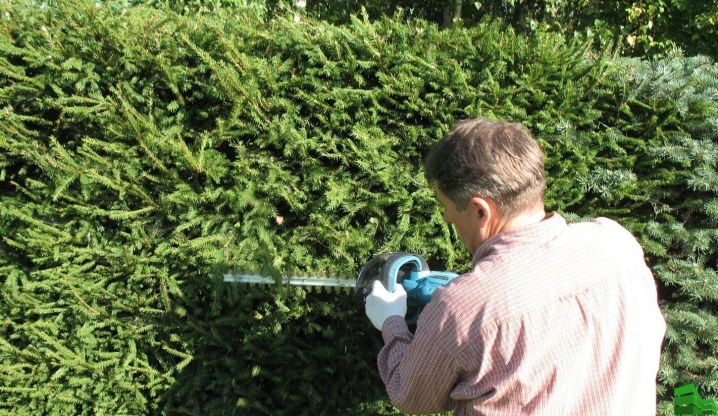
Preparing for winter
Adult specimens can withstand frosts on their own, but young trees need insulation. You can construct a protective shelter from slats covered with burlap. It is recommended to put straw, dry leaves or sawdust inside. And also spruce branches can serve as a heater. Such options for shelters will contribute not only to protecting the plant from the cold, but will also protect the needles in the spring from the burns of the first spring sun.
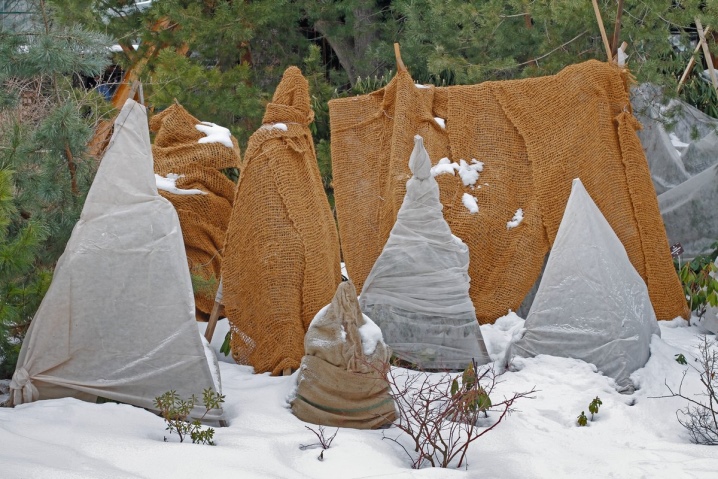
Diseases and pests
Fir is little attacked by pests and diseases, but this problem can arise when planting rules are violated or when grown in unsuitable conditions. Often on a tree you can see the manifestation of the brown shute disease. It can be recognized by yellowed needles, which turn black over time, and by autumn it is covered with black fungus. The infected specimen is removed, and adjacent plantings are treated with fungicides.
Another common ailment of fir is rust. The presence of the disease is indicated by an orange or yellow bloom on the branches in the summer.
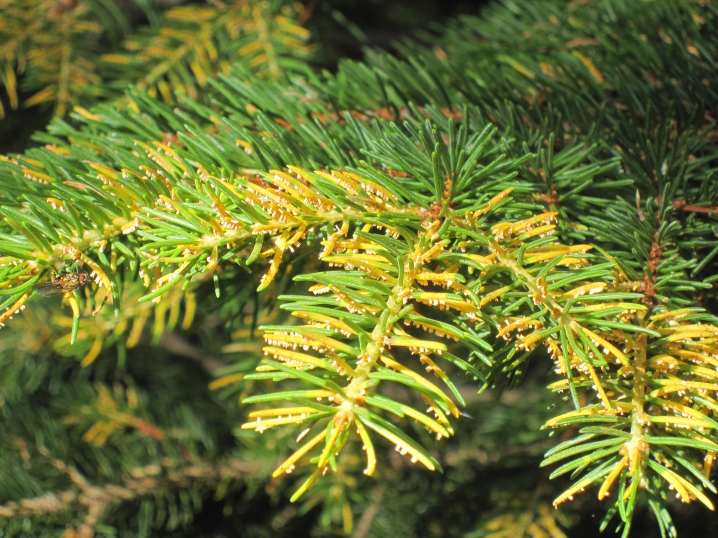
To prevent the disease, it is recommended to treat the seedlings with copper sulfate or Bordeaux liquid, and also to prevent thickening of the plantings.
Of insects, the most popular among insects to feast on wood is the false shield, spider mite, fir leafworm, pine cone moth, wireworms, and beetles. Insecticides and acaricides remain the best control methods. And also folk remedies are permissible for use, for example, infusions of tobacco, garlic or dandelion.
How to properly care for and plant fir, see below.































































The comment was sent successfully.